Third Guatemalan School of Astrophysics
Compact Objects: Neutron Stars, white dwarfs and Black Holes
Guatemala city, November 29th - December 1st 2017
Presentation
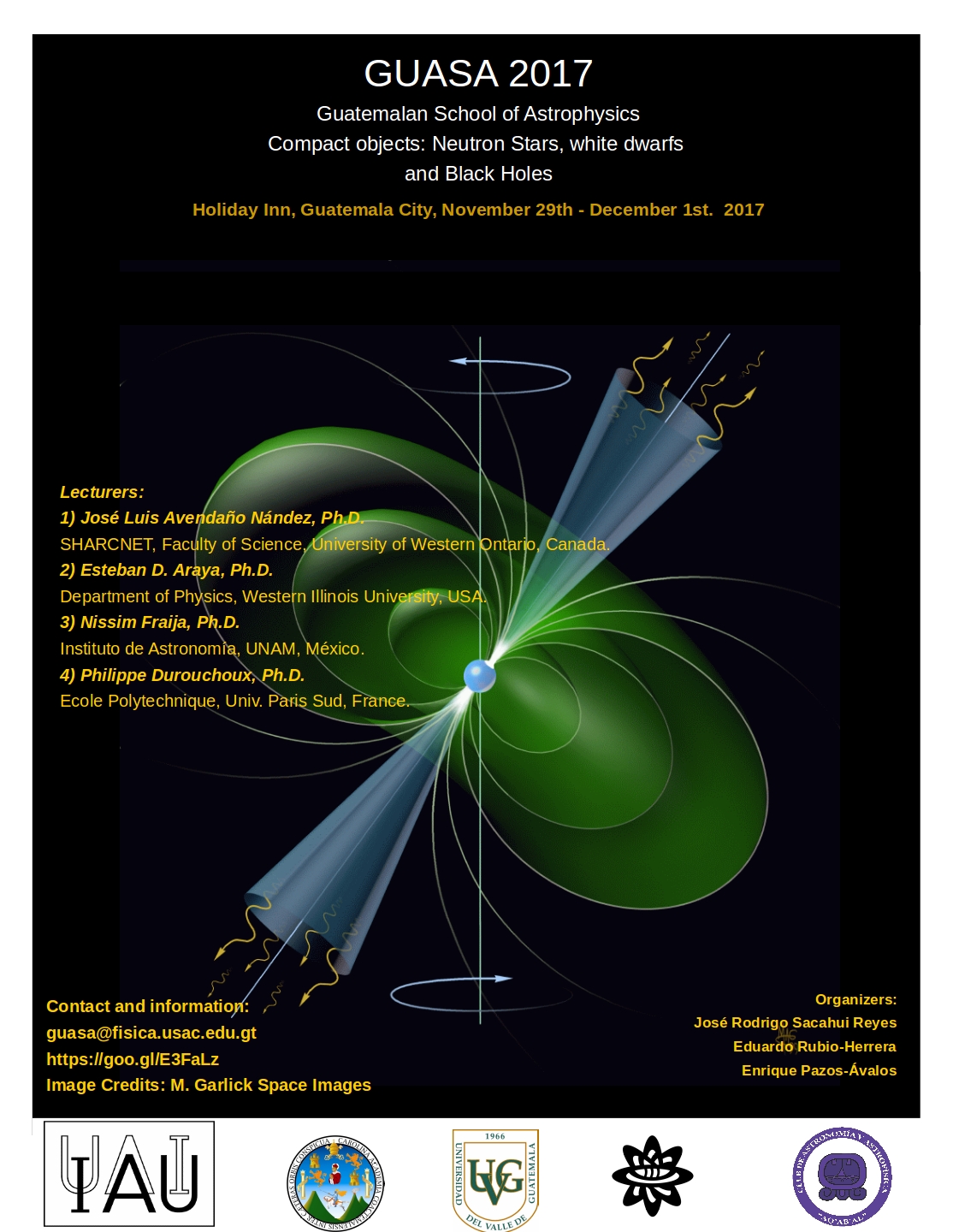 |
| Click to see full size. |
The Third GUAtemalan School of Astrophysics (GUASA) focuses on the cutting edge developments and discoveries related to Compact Objects and astrophysical emissions related to them. There will be lectures that will cover a wide range of topics related to this exciting and developing branch of astrophysics. Starting with white dwarfs, neutron stars and cataclismic events related to them as well as how we can detect them. We will go deeper in our current understanding of these objects addressing topics such as structure, formation and the evolution. Last but not least, we will hold a series of sessions in which we will discuss the current status about emissions related to them and the way to detect them in different wavelenghts.
The school will welcome a maximum of 25 undergraduate and young graduate students and will provide a unique opportunity for the participants to broaden their knowledge in this exciting field of astronomy.
The school will be approximately 50% in English and 50% in Spanish language.
Scientific Rationale
We launch the third GUAtemalan School of Astrophysics (GUASA) to be held in Guatemala every two years. The school aims to bring together local Central American/Caribbean advanced undergraduate students of physics, mathematics and engineering, with experts from prestigious astronomical institutions from around the world. We aim for the highest standard of lecturers and students as participants.
During everyone of its editions, we expect to cover a wide range of modern topics in Astrophysics in order to motivate the students of the Mesoamerican region to pursue major degrees in Astronomy abroad. We hope that this school will contribute to create a critical mass of professional astronomers/astrophysicists in the region along with the conditions needed for research, thus leading to the creation of strong astrophysics departments in the Universities of the region. In the future, after a few editions of GUASA, we hope to be able to include lecturers from the local academic community.
As a complementary activity of every edition of GUASA, we will also organize outreach activities for the general public, such as public lectures. These activities will encourage children and teenagers to get closer to science and to continue their studies aiming for higher education.
Invited Lecturers
 |
Dr. José Luis Avendaño Nández SHARCNET University of Western Ontario Research: Jose has performed three-dimensional dynamical interactions (using a Smoothed Particle Hydrodynamics code) of common envelope events with low-mass giant donors and a white dwarf companion. The results of such interactions is the formation of double white dwarfs and the ejection of all red-giant's envelope to the interstellar medium. |
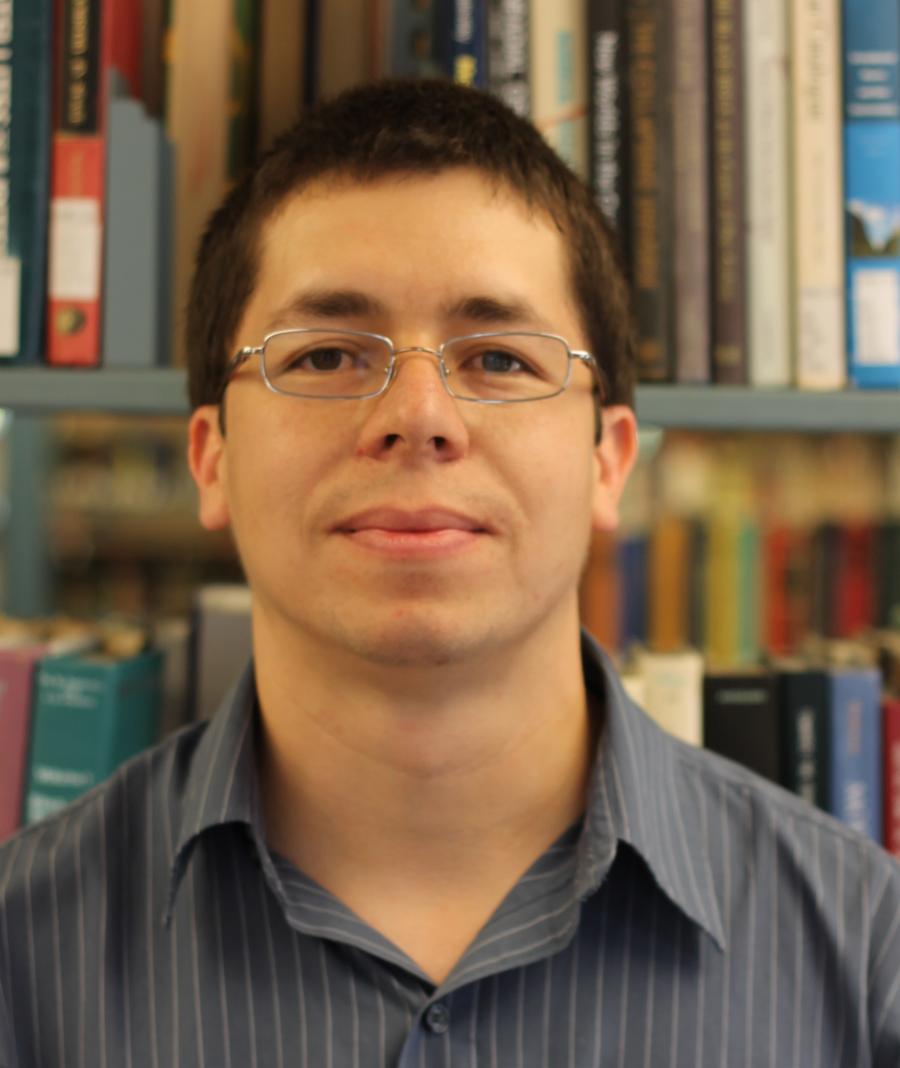 |
Dr. Esteban D. Araya Department of Physics Western Illinois University Research: His main research interest is the study of star formation and the interstellar medium, in particular the formation of massive stars. He conducts observations at radio frequencies with some of the most sensitive radio telescopes available, including the Arecibo Telescope and the Very Large Array (VLA). |
 |
Dr. Nissim Fraija Instituto de Astronomía Universidad Nacional Autónoma de México. Research: His research interests are gamma ray astronomy, neutrino emission from astrophysical sources and cosmic rays, which are generated in sources like GRBs, AGNs and SNs. He is member of the collaboration of the gamma ray observatory HAWC (high altitude water Cherenkov). |
 |
Dr. Philippe Durouchoux Ecole Polytechnique Univ. Paris Sud. Research: He is an astrophysicist that have conducted different researches on compact objects (NS, BH and microquasars) as well as searching for black hole jets in molecular clouds. He has worked in several high energy astrophysics missions such as CGRO and INTEGRAL. |
Location
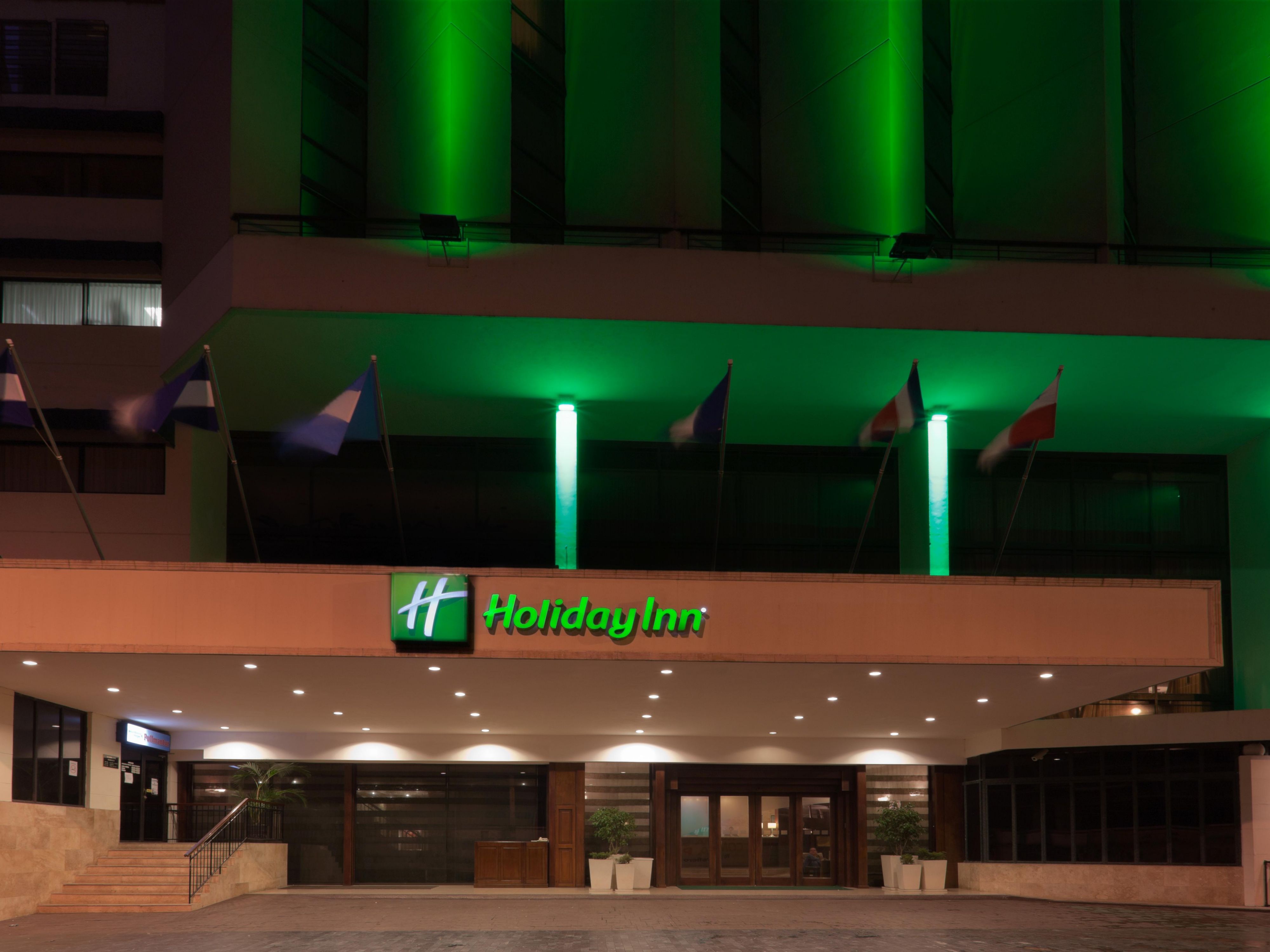 |
| Holiday Inn: 1ra avenida 13-22 zona 10, Guatemala city. |
The school will take place at Holiday Inn Guatemala, located in zona 10, one of the nicest places in Guatemala city.
The school will have a symbolic contribution. Only students selected by the organizing committee can attend.
In case you need more information about the hotel you can visit Holiday Inn Guatemala
And if you want to contact GUASA please write to guasa@fisica.usac.edu.gt
Application
- The registration to GUASA 2017 must be done by this form. To fill the form you will need:
- Course transcripts.
- Curriculum Vitae.
- A recomendation letter that must be sent directly to guasa@fisica.usac.edu.gt
- Incomplete applications will not be considered.
- Deadline for application will be October 10.
- Accepted students will be notified by email. The participants list will be published by mid October the latest.
- Accepted students would contribute with:
- Q. 100.00 (or equivalent in USD) for active students.
- Q. 250.00 (or equivalent in USD) for non students.
- There will be exoneration of fee for a limited number of students.
Unfortunately this year there is no financial aid for hotel and travel
Organizing Committee
- Dr. José Rodrigo Sacahui Reyes, USAC
- Dr. Eduardo Rubio-Herrera, UVG
- Dr. Enrique Pazos Avalos, USAC
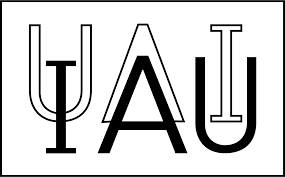 |
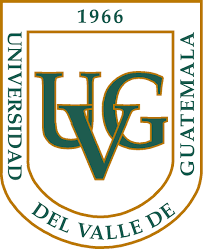 |
 |
 |